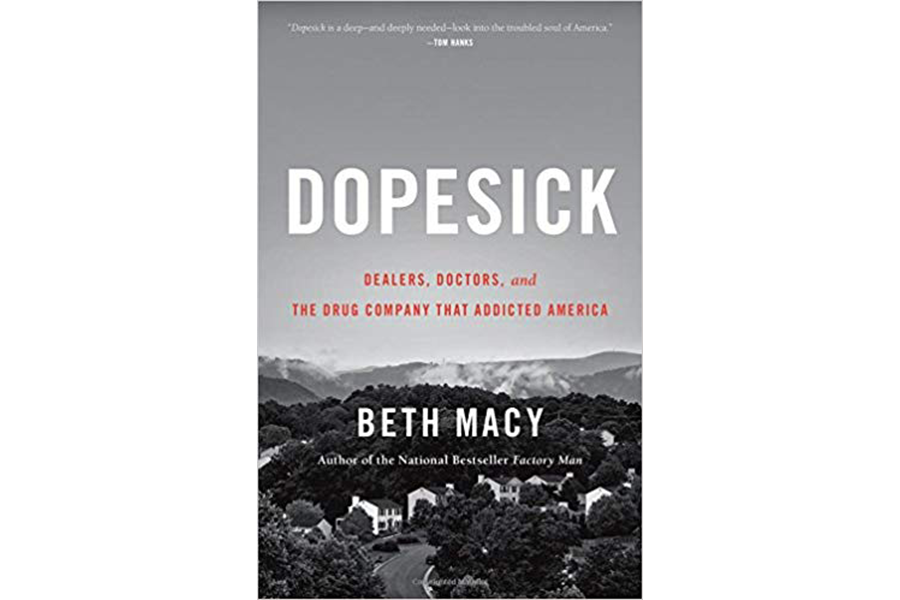'Dopesick' brings the opioid epidemic to heart-breaking life
Loading...
As veteran Virginia journalist Beth Macy puts it, drugmakers and physicians spawned a horrific opioid epidemic that's evolved from prescription painkillers like Oxycontin to heroin and beyond. But that's just part of the story in her extraordinary new book Dopesick: Dealers, Doctors, and the Drug Company that Addicted America, an essential and heart-wrenching examination of an ongoing American catastrophe.
With deep humanity, Macy visits the heart of the crisis – poor rural towns – to profile the addicted, their bewildered loved ones, and the others caught in widening circles of devastation.
The picture is not all grim. As Macy tells our contributor Randy Dotinga, collaboration can help communities fight the tide of stigma, fear, and government inaction.
Q: What makes this opioid epidemic unique?
We have 2.6 million people addicted to opioids, an addiction that grew out of physician prescriptions and a new painkiller.
In the last 15 years, we've lost 300,000 people to drug overdoses. If the epidemic continues on the current course – and it's not expected to turn around – we're supposed to lose that many in the next five years.
Q: How has the opioid epidemic affected communities?
You watch people age before your eyes – the families, the addicted people, and the first responders.
The families suffer with guilt and confusion.
I hear a lot of people saying, "I thought it was just pills. He was working every day, he was fit, he was handsome. How did he die of a heroin overdose?"
Q: What does the title of your book mean?
"Dopesick" is the word people who are addicted use to describe withdrawal from opioids.
At the end of your journey, you're not trying to get high. You're just trying not to be sick. That's an important part that people really don't understand.
I write about a 78-year-old man who had injuries from coal mining. He was prescribed a low-dose painkiller. Once Oxycontin came onto the scene, a much more powerful drug, he lost everything. His daughter thinks he was murdered over a drug deal gone bad.
People like him have to operate in this really rough criminal world solely because they don't want to be dopesick.
Q: What did you learn about rehab, which is in very short supply?
A lot of families think it's going to work for their loved ones. Then they come back and relapse. They'll take the same amount of the drug they used to take, and often they'll die because it will overpower them.
According to research, it takes the typical opioid-addicted person eight years from the time they first ask for help – 4-5 episodes of treatment – just to achieve one year of sobriety. Many don't have eight years because they die first.
Some parents to send their kids to abstinence-only rehab programs, but statistically the more successful programs use anti-craving drugs. They're opioids, but they don't get you high if you take them correctly.
Q: Unlike other drug epidemics, this one started in rural areas like Appalachia and the Rust Belt. Why?
It first bubbled up in these distressed rural communities where mines are closing and jobs are going away. You also have large percentages of workers who were injured on the job.
Purdue Pharma [the manufacturer of Oxycontin] targeted areas with a lot of workplace injuries and higher rates of disability where there was already heavy opium prescribing.
Some people pretty quickly figured out that if they used a Medicaid card, they could get a prescription for Oxycontin for a dollar or two. They could take half the pills, sell the rest, and make thousands.
Q: Why the epidemic seem to go unnoticed for years?
You had all these huge warning signs, but these were politically unimportant places.
Q: What role should law enforcement play?
They have to target the big drug dealers.
But President Trump is talking about executing all drug dealers. The drug dealers in my book are football stars and tree trimmers, paralegals with degrees from Jerry Falwell's university. Most are addicted to opioids and sold heroin in order to fund their own fixes. They're going to prison.
Q: You wrote about a tiny town in Tennessee that vehemently opposed a non-profit rehab clinic but eventually turned around thanks to hard work by a coalition of local medical and faith-based leaders. The clinic opened and has had no incidents. What does this tell you?
Communities are realizing they'll have to help themselves if the federal government isn't going to get on this. I wish all communities would have this kind of collaboration.
Q: What gives you hope?
Look at the parents who've lost loved ones. They go to all these community meetings, and they tell their stories to inspire people even though it hurts them so much. You just have to persevere.







